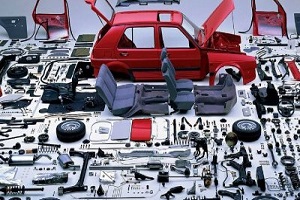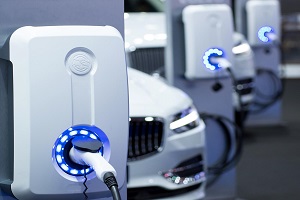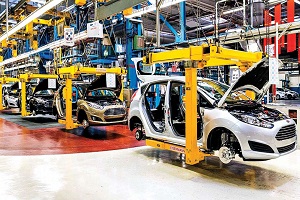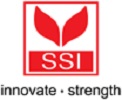Get a Project Report
Top Lucrative Business Ideas for Startups
AUTOMOTIVE INDUSTRY:
The automotive industry continues to be one of the world’s most important manufacturing industries. The global automotive industry is undergoing the most significant transformation in its history. Automakers are pondering various forms of autonomous driving and electric vehicles, which will force them to change their business structures and product ranges. Engineering, design, next-generation production, distribution, and aftermarket are just a few of the segments that make up the automotive industry. Automobile manufacturers are concentrating on cost containment, increased efficiency, and the usage of alternative energy engines. Gasoline, diesel, electric, and various hybrid or alternative fuel cars such as ethanol and combined electrical motor heat engine drives fall into numerous different groups based on the fuel used.
AUTO ANCILLARY:
The Auto Ancillary Industry is the industry that deals with the manufacturing and sale of intermediate components, equipment, and chemicals, among other things. Original equipment manufacturers (OEMs), tier I, tier II, tier III manufacturers, and intermediates are all part of the auto accessory supply chain. OEMs dominate the market and deal in high-value instruments, whilst the unorganised sector serves the aftermarket and deals in low-value equipment. The worldwide auto auxiliary market’s growth is influenced by a number of variables. Factors such as rising demand for high energy density batteries, production of brake pads with low levels of copper and heavy metals, a growing desire for technologically advanced products, a broader range of pump applications as technology gains traction, and expansion collaboration mergers are all contributing to this trend. The worldwide auto parts manufacturing market is growing due to mergers and acquisitions among manufacturers to expand market reach, rising automotive production, and increased demand for lithium batteries. In the approaching years, Asia Pacific is predicted to have a high market penetration rate. Due to a favourable environment, this region now has a high growth potential and scope for the auto parts manufacturing market, and it offers different growth chances to producers in this industry. The Asia Pacific auto parts manufacturing industry is expected to grow at a moderate CAGR.
AUTO COMPONENTS MARKET:
The Global Auto Component Market is predicted to increase at a CAGR of 3.2%. Engine and auto component manufacturers, as well as aftermarket parts manufacturers, suppliers, dealers, and retailers, are all part of the worldwide auto component market. Because of the increased market potential and low-cost manufacturing choices available, car component manufacture is gradually relocating to Asian countries such as China, India, and others. OEMs in China and India are concentrating their efforts on assisting suppliers in improving and expanding their operations. Strong industry expansion has drawn a number of enterprises to operate in China’s auto component sector, including big multinational corporations. Electronics’ expanding importance, as well as the functional integration of green components and sustainable products, will propel the sector forward.
ELECTRIC VEHICLES (EVS) MARKET:
Electric cars, also known as electric vehicles (EVs), are the most fuel efficient automobiles when compared to traditional internal combustion engines (ICEs), with zero pollution, lower emissions, and cheaper energy prices (on a fuel to electricity basis). Electric vehicles are more expensive than standard automobiles, owing to the additional cost of a high-capacity battery. Hybrid electric vehicles (HEV) combine a typical internal combustion engine (ICE) with an electric propulsion system, which gives HEVs better fuel economy than conventional automobiles. Other green vehicles that run on alternative fuels such as ethanol (flex fuel automobiles) and compressed natural gas (CNG) have gained traction in both the commercial and consumer markets. The global electric vehicle market is expected to develop at a 17.4% compound annual growth rate (CAGR). Alternative fuel vehicles have entered the market as a result of rising gasoline prices and the environmental impact of regular fuel automobiles. The market is likely to be driven by consumers’ rising preference for hybrid or battery-powered vehicles. Propulsion is provided by one or more electric motors in all EV versions. Electricity is the primary source of energy for EVs. They don’t have any internal combustion engines. Conventional cars are one of the major sources of air pollution on a global scale. As a result, several governing bodies are being forced to enforce rigorous emission vehicle restrictions on automobile manufacturers in order to reduce vehicle emissions. Because these vehicles do not use traditional fuels like diesel or gasoline, consumer demand for Plug-in Hybrid Electric Vehicles (PHEV) and Battery Electric Vehicles (BEV) has risen dramatically in recent years. EVs also have lower maintenance costs than typical gasoline-powered vehicles, giving them an advantage over them.
AUTOMOBILE INDUSTRY IN INDIA:
India has the world’s fifth largest vehicle industry. India was the world’s fifth largest auto manufacturer and seventh largest commercial vehicle manufacturer. In India, the electric vehicle (EV) market is predicted to be worth Rs. 50,000 crore (US$ 7.09 billion). Several technological and automotive businesses have indicated interest in India’s electric vehicles and/or made investments in the country. Hyundai, MG Motors, Mercedes-Benz, and Tata Motors have all introduced electric vehicles to the market. According to a recent study by Castrol, the majority of Indian consumers would consider purchasing an electric vehicle. The ‘tipping points’ for mainstream EV adoption will be a price point of Rs. 23 lakh (or US$ 31,000) for an average Indian consumer, a charge time of 35 minutes, and a range of 401 kilometres on a single charge. To satisfy India’s electric vehicle (EV) objectives, a total expenditure of Rs. 12.5 trillion (US$180 billion) in vehicle production and charging infrastructure will be required until 2030. In India, the EV market is expected to grow at a 36 percent CAGR.
GLOBAL MARKET OUTLOOK:
The global automotive motors market is expected to increase at a CAGR of 4.8 percent over the next five years. The introduction of fuel-efficient technologies will have a substantial impact on hybrid electric and battery electric vehicles, which will drive the demand for automotive motors. Automobile manufacturers’ attention has switched from fuel economy, performance, driver safety, and vehicle stability to extra features like vehicle networking and electrification of functions. This shift in emphasis has opened up a huge market for traction, induction, and brushless motors. OEMs will be encouraged to add more automotive motors for proper operation as consumer interest on driving comfort grows. The market for mid- and lower-segment automobiles would be boosted if more automotive motors supported all characteristics. Automobile motor manufacturers may see a significant income opportunity as a result of such activities. The Asia Pacific region is expected to dominate the global automotive motors industry. Implementing new technologies, expanding manufacturing facilities, and establishing a value-added supply chain between manufacturers and material suppliers have created a huge opportunity for the region’s automotive motors market to flourish.
TOP PLAYERS WORLDWIDE:
- Ashok Leyland Ltd.
- Bajaj Auto Ltd.
- Force Motors Ltd.
- Hero MotoCorp Ltd.
- Hyundai Motor India Ltd (HMIL)
- Mahindra & Mahindra Ltd.
- Maruti Suzuki India Ltd.
- Tata Motors Ltd.
- Toyota Motor Corp. (TM)
- Volkswagen AG (VWAGY)
- Daimler AG (DMLRY)
- Ford Motor Co. (F)
- Honda Motor Co. Ltd. (HMC)
- Bayerische Motoren Werke AG (BMWYY)
- General Motors Co. (GM)
- Fiat Chrysler Automobiles NV (FCAU)






















